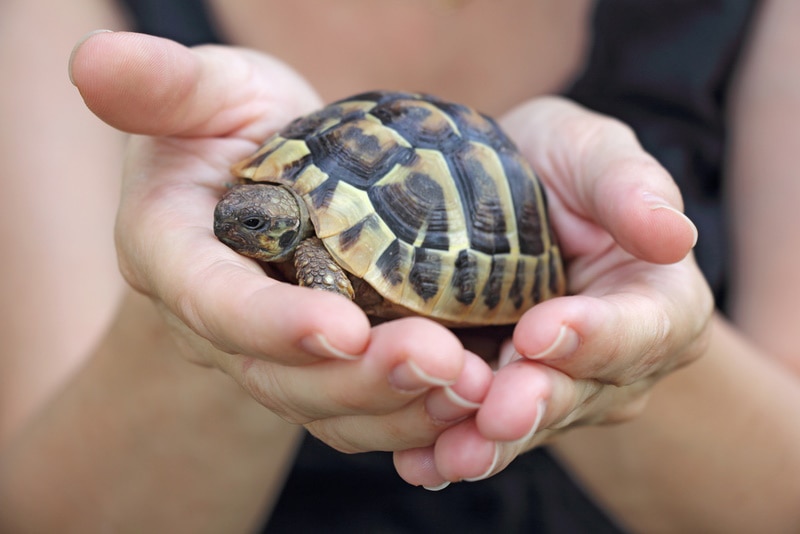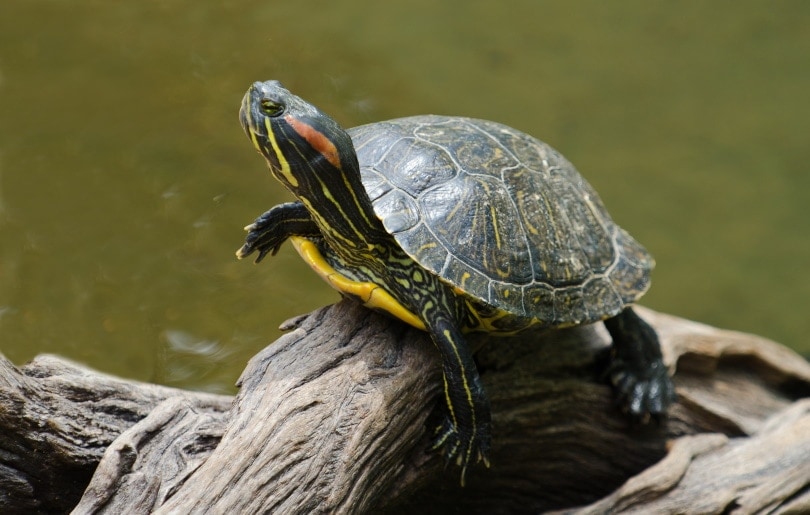Why Do Turtles Have Shells? Vet-Reviewed Facts & Biological Purpose
Updated on
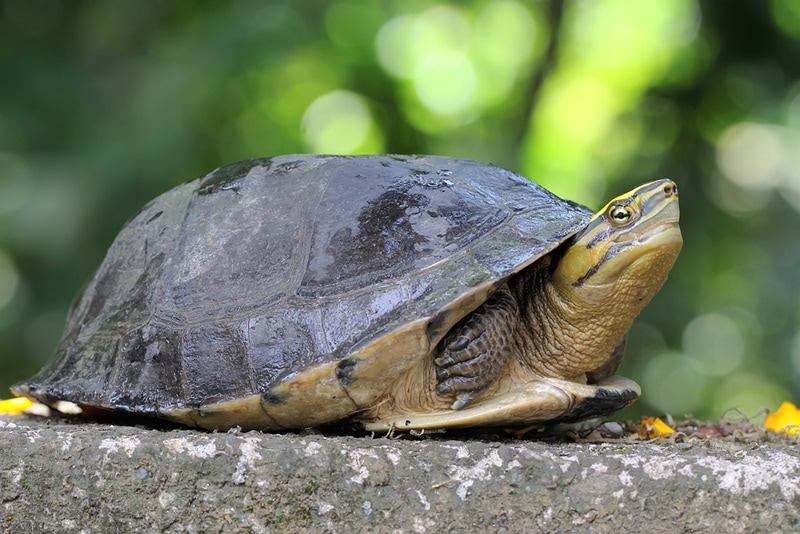
Click to Skip Ahead
The iconic shell of a turtle is more than just an aesthetic marvel of nature; it serves as a key survival tool. Turtles’ shells, which are actually a part of their skeletal system, serve a crucial protective function. They evolved from ribs and parts of the turtle’s skin, providing an external shield against potential threats. This function is essential to a turtle’s survival strategy, compensating for their relatively slow speed by providing a sturdy barrier against predators.
Unlike some creatures’ protective measures, the turtle’s shell is not removable armor or sheddable skin; it is a fundamental part of the turtle’s body that is vital for their survival.
Shell Evolution and the Story of Survival
The evolutionary tale of the turtle’s shell is a testament to nature’s ingenuity and adaptation. Existing for over 100 million years, turtles have seen the world change drastically around them. Yet, they have endured. Their slow speed could have been a considerable disadvantage in the game of survival. Yet, nature equipped them with a formidable defense mechanism – the shell.
This protective casing isn’t a late addition to the turtle’s anatomy. Rather, it is deeply integrated into their body structure. The shell evolved from the turtle’s ribs and parts of their skin, resulting in a fusion of bones that create a shield over their back. Its growth patterns are similar to that of human bones, with corresponding growth plates that determine the shape and size of the shell.
This isn’t merely passive protection, either. The shell is dynamic and active in a turtle’s life. It plays a significant role in various physical activities like burrowing, swimming, and even courtship rituals. Thus, from its origins as a burrowing tool to its role as a defense mechanism and a facilitator of routine activities, the turtle’s shell has been integral to the turtle’s survival and identity.
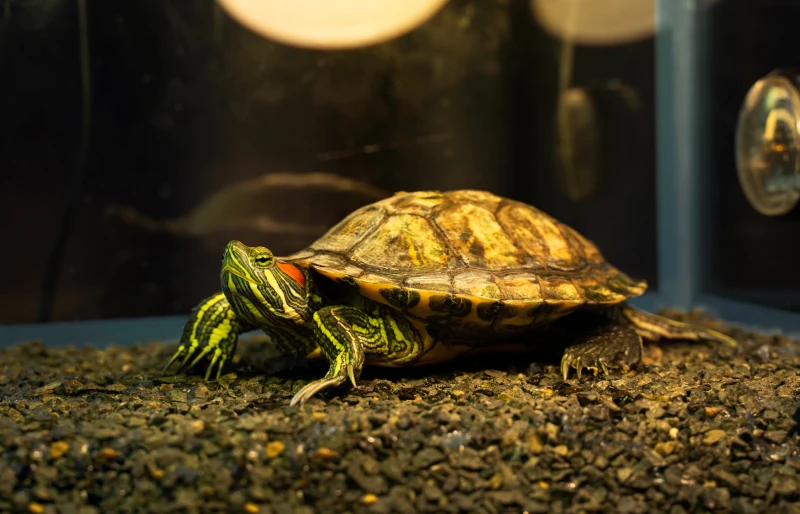
Types of Turtles and Their Unique Shells
When it comes to turtles, one size definitely does not fit all. The world of turtles is filled with diverse species, each boasting a unique shell structure that speaks volumes about their lifestyle, habitat, and survival strategies.
Generally speaking, sea turtles have flat, somewhat heart-shaped shells that are designed to be streamlined for swimming. They are also unable to fully retract into their shells.
Aquatic turtles, also known as freshwater turtles or terrapins, generally offer the greatest amount of variation in their shell designs. Species that swim frequently tend to have more streamlined shells, whereas those that tend to stay on land more frequently and only use the water to escape a perceived threat tend to have slightly dome-shaped shells. Aquatic turtles do not swim as fast as sea turtles, however, they are able to fully retract into their shells if they ever feel threatened.
Tortoises typically have large, round, dome-shaped shells. Like aquatic turtles, they too can retract into their shells whenever they feel threatened.
Dietary Considerations for a Healthy Shell
Shells, like the rest of the turtle’s body, require a nutrient-rich diet for optimum health. Different turtle species have different dietary preferences, shaped by their habitats and the availability of food sources.
The nutrients from their diet contribute directly to the health of a turtle’s shell. Inadequate nutrition can lead to shell deformities and other health issues. Hence, it’s crucial to maintain a balanced diet to ensure a strong, healthy shell.
It is also important to not provide too much nutrition to your pet turtle, as this too can have detrimental effects on their shell and can permanently deform their shells. It is therefore very important to discuss your turtle or tortoise’s nutrition with your veterinarian to ensure that you’re feeding them appropriate amounts of food of acceptable nutritional value.
Preservation Efforts and Challenges
Even though they are equipped with nature’s armor, turtles face considerable challenges to their survival. Many species of sea turtles are on the endangered list, facing threats that their shells cannot ward off. The reasons are largely anthropogenic (stemming from human activity) —from the hazards of fishing nets and loss of habitat due to coastal development, to the perils of ocean pollution.
Bright lights on coastal buildings can lead hatchlings away from the ocean, causing them to become disoriented and vulnerable. The proliferation of plastic waste in the oceans is a critical problem. Sea turtles, particularly leatherbacks, are known to confuse plastic bags with jellyfish, leading to ingestion, obstruction, starvation, and often death.
Furthermore, changes in the global climate have the potential to impact turtle populations dramatically. Increasing temperatures can alter the sex ratio of hatchlings, as the sex in many turtle species is determined by the incubation temperature. Higher temperatures could lead to a higher proportion of female hatchlings, skewing the sex ratio and impacting future breeding populations!
Likewise, pet turtles and tortoises also face challenges, often brought about by climate change and human activity, which has led to many species being declared as threatened, endangered, or critically endangered. It is therefore important to ensure that it is both legal and ethical to adopt a particular turtle species as a pet.
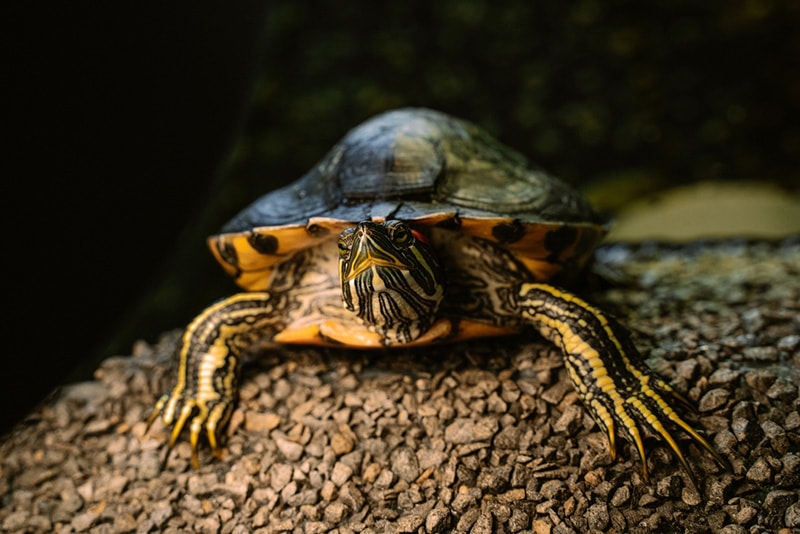
Role of Shells in Turtle Identification and Conservation
Understanding the role of shells in turtles’ lives extends beyond the realm of biological curiosity. It also plays a pivotal role in turtle conservation. Differences in shell shape, size, color, and pattern are used to identify different species, monitor their growth and health, and understand their behavior and ecology. Such knowledge aids in the development of species-specific conservation strategies, as each species faces unique challenges and threats.
For example, leatherback turtles’ unique shells have inspired modifications to fishing gear to prevent these animals from being caught, while the declining health of a local turtle population’s shells may indicate an environmental issue in their habitat that needs to be addressed.
In the case of the critically endangered Hawksbill turtle, their beautifully patterned shells have unfortunately made them a target for illegal wildlife trade. International regulations and vigilant enforcement are needed to combat this illegal trade and protect these animals.
Conclusion
In essence, the shell of a turtle is an evolutionary masterpiece designed to ensure the creature’s survival in a world full of threats. From the ground-dwelling ancestors to the diverse species we see today, the shell has been a vital constant, offering protection, aiding survival, and defining the very essence of what it means to be a turtle. The varied shell structures seen among different species speak to the adaptability and resilience of these ancient creatures.
Yet, the survival of these shell-bearing survivors is threatened today, more by human activity than natural predators. The health and integrity of the shell, and by extension the turtle itself, are reflections of the broader environment’s health. It’s in our hands to ensure these magnificent creatures continue to grace our world for generations to come. By understanding the importance of their shells and taking active steps in turtle conservation, we can make a difference in the survival of these remarkable creatures.
Related Read:
- Can Turtles Live on Land? Vet-Approved Facts & FAQ (With Comparison Table)
- How Hard Is a Turtle Shell? Strength, Reasons, & FAQ
Featured Image Credit: Wayan Sumatika, Shutterstock


